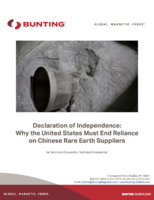Research Team studies effects of processing flaws in graphene.
Share:
Press Release Summary:
Using sophisticated computer modeling and advanced material analysis, research team led by University of Buffalo has demonstrated how relatively simple processing flaws can seriously degrade electronic properties of graphene. Paper demonstrates how wrinkles in graphene sheet and/or chance contaminants from processing disrupt and slow electron flow across sheet. Results could be important for design of commercial manufacturing processes that exploit unique electrical properties of graphene.
Original Press Release:
Graphene: What Can Go Wrong? New Studies Point to Wrinkles, Process Contaminants
Using a combination of sophisticated computer modeling and advanced materials analysis techniques at synchrotron laboratories, a research team led by the University at Buffalo (UB) and including the National Institute of Standards and Technology (NIST), the Molecular Foundry at Lawrence Berkeley National Laboratory and SEMATECH* has demonstrated how some relatively simple processing flaws can seriously degrade the otherwise near-magical electronic properties of graphene.
Their new paper** demonstrates how both wrinkles in the graphene sheet and/or chance contaminants from processing-possibly hiding in those folds-disrupt and slow electron flow across the sheet. The results could be important for the design of commercial manufacturing processes that exploit the unique electrical properties of graphene. In the case of contaminant molecules at least, the paper also suggests that heating the graphene may be a simple solution.
Graphene, a nanostructured material that is essentially a one-atom thick sheet of carbon atoms arranged in a hexagonal pattern, is under intense study because of a combination of outstanding properties. It's extremely strong, conducts heat very well, and has high electrical conductivity while being flexible and transparent. Graphene's electrical properties, however, apparently depend a lot on flatness and purity.
Using X-rays, the UB team produced images that show the electron "cloud" lining the surface of graphene samples-the structure responsible for the high-speed transit of electrons across the sheet-and how wrinkles in the sheet distort the cloud and create bottlenecks. Spectrographic data showed anomalous "peaks" in some regions that also corresponded to distortions of the cloud. NIST researchers, using their dedicated materials science "beam line" at the National Synchrotron Light Source (NSLS),*** contributed a sensitive analysis of spectroscopic data confirming that these peaks were caused by chemical contaminants that adhered to the graphene during processing.
Significantly, the NIST synchrotron methods group was able to make detailed spectroscopic measurements of the graphene samples while heating them, and found that the mysterious peaks disappeared by the time the sample reached 150 degrees Celsius. This, according to Dan Fischer, leader of the NIST group, showed both that those particular disturbances in the electron cloud were due to contaminants, and that there is a way to get rid of them. "They're not chemical bound, they're just physically absorbed on the surface, and that's an important thing. You have a prescription for getting rid of them," Fischer said.
"When graphene was discovered, people were just so excited that it was such a good material that people really wanted to go with it and run as fast as possible," said Brian Schultz, one of three UB graduate students who were lead authors on the paper, "but what we're showing is that you really have to do some fundamental research before you understand how to process it and how to get it into electronics."
"This is the practical side of using graphene," agrees Fischer, "It has all these remarkable properties, but when you go to actually try to make something, maybe they stop working, and the question is: why and what do you do about it? These kinds of extremely sensitive, specialized techniques are part of that answer."
For more on the study, see the UB June 28, 2011, news announcement "Researchers Image Electron Clouds on the Surface of Graphene, Revealing How Folds in the Remarkable Material Can Harm Conductivity" at http://www.buffalo.edu/news/12673.
* SEMATECH is a nonprofit research consortium that advances the U.S. semiconductor industry.
** B.J. Schultz, C. J. Patridge, V. Lee, C. Jaye, P.S. Lysaght, C. Smith, J. Barnett, D.A. Fischer, D. Prendergast and S. Banerjee. Imaging local electronic corrugations and doped regions in graphene. Nature Communications. V2, 372. Published on-line June 28, 2011. doi:10.1038/ncomms1376.
*** The NSLS is located at the Brookhaven National Laboratory.
The National Institute of Standards and Technology (NIST) is an agency of the U.S. Department of Commerce.




